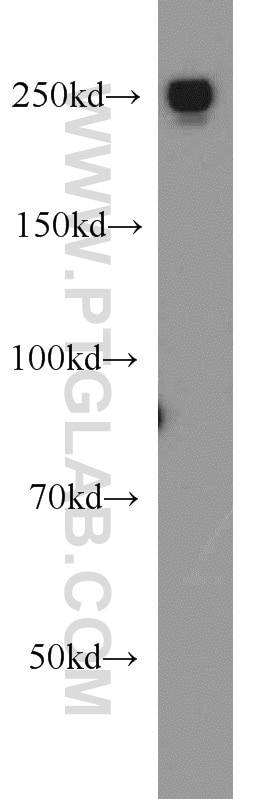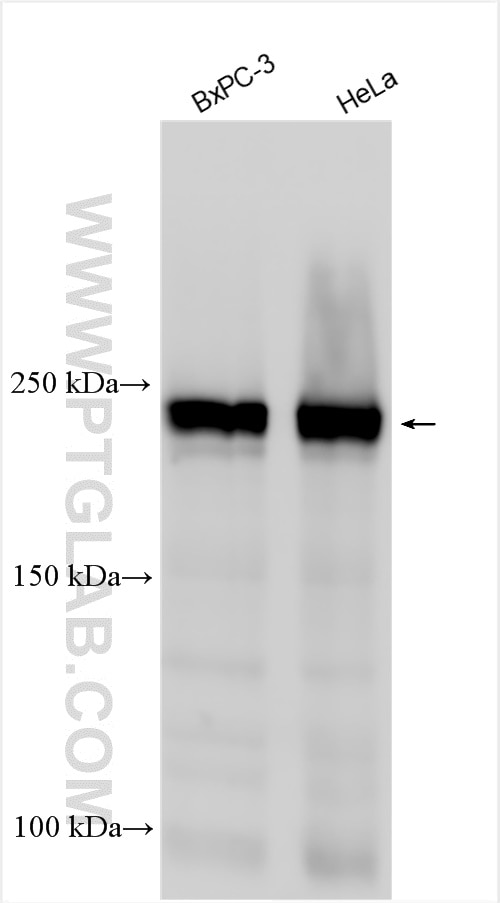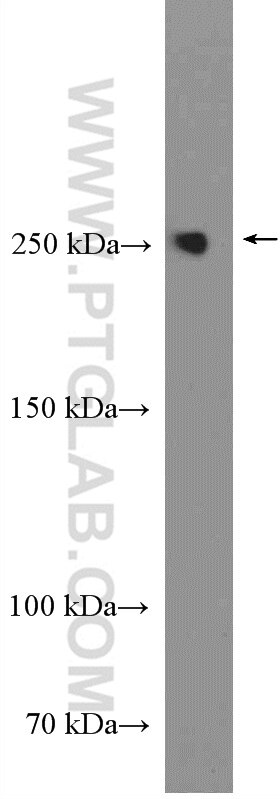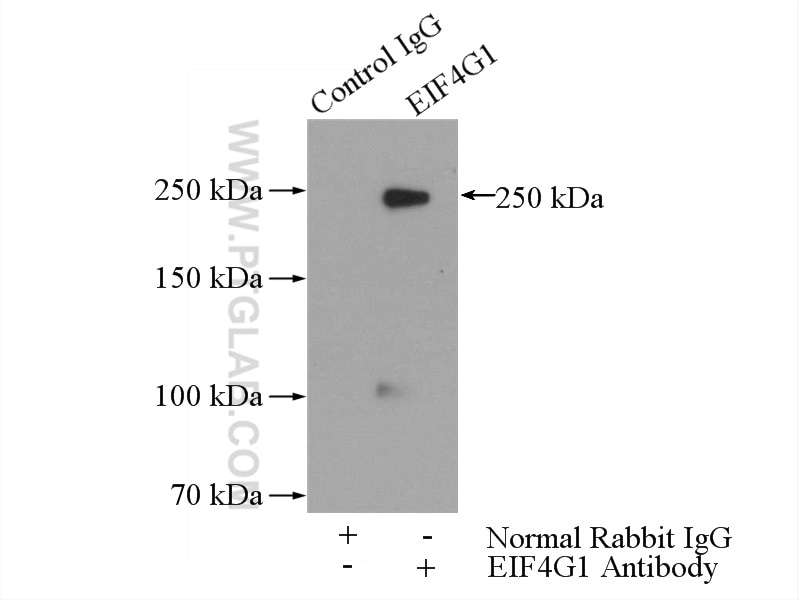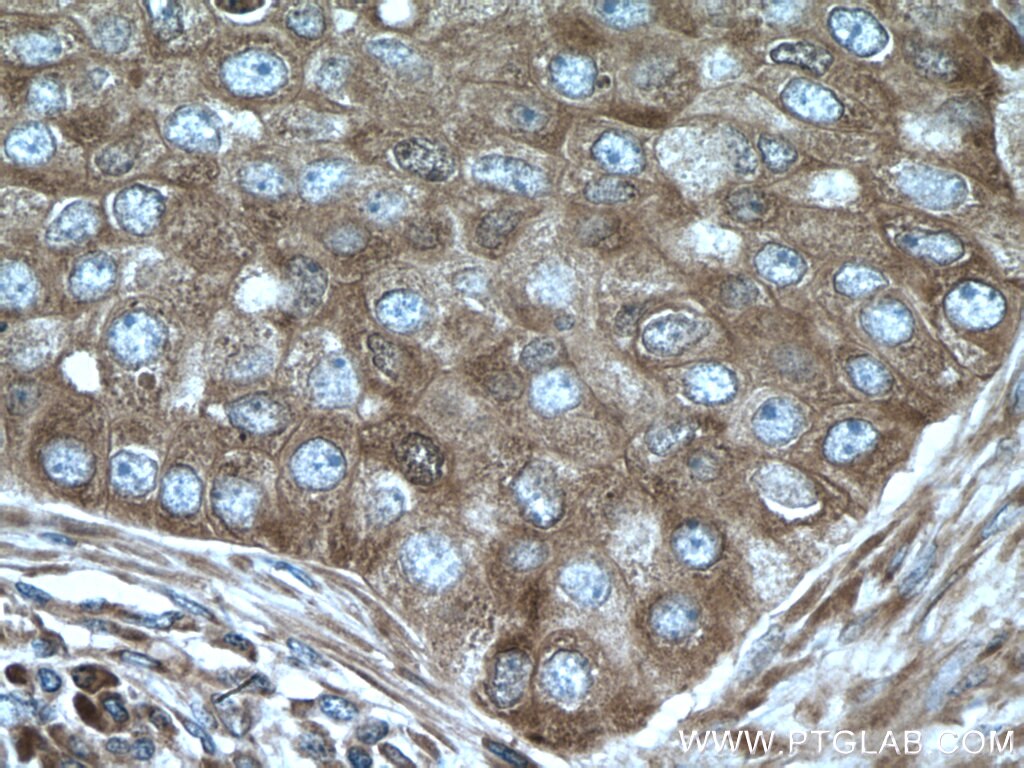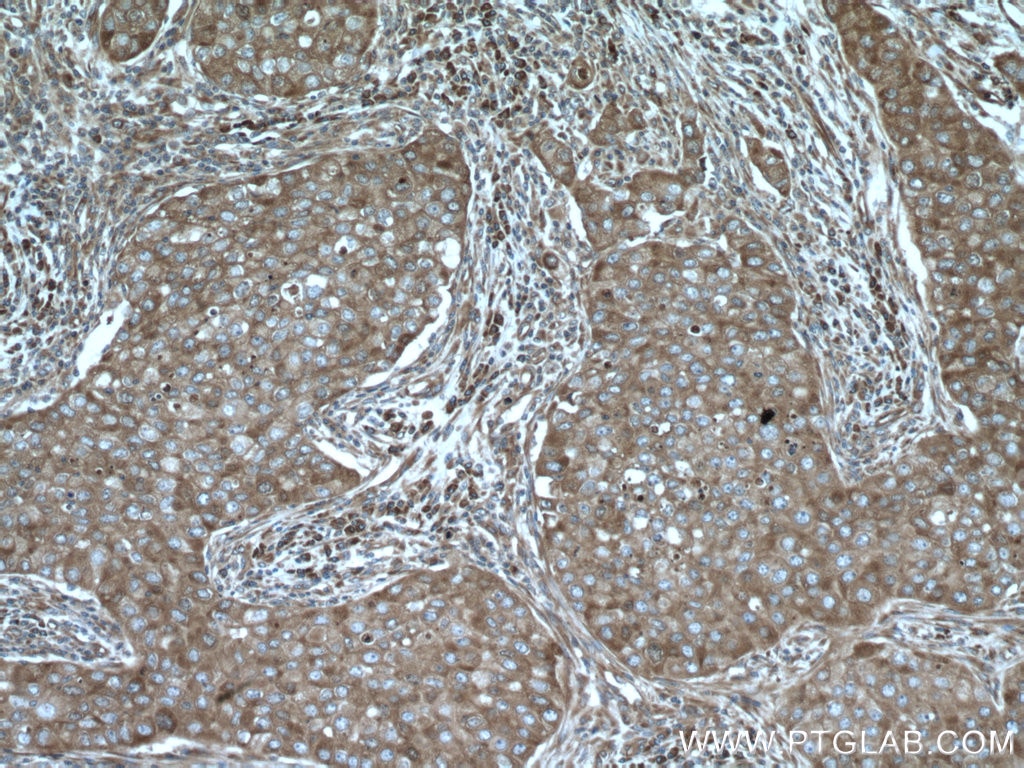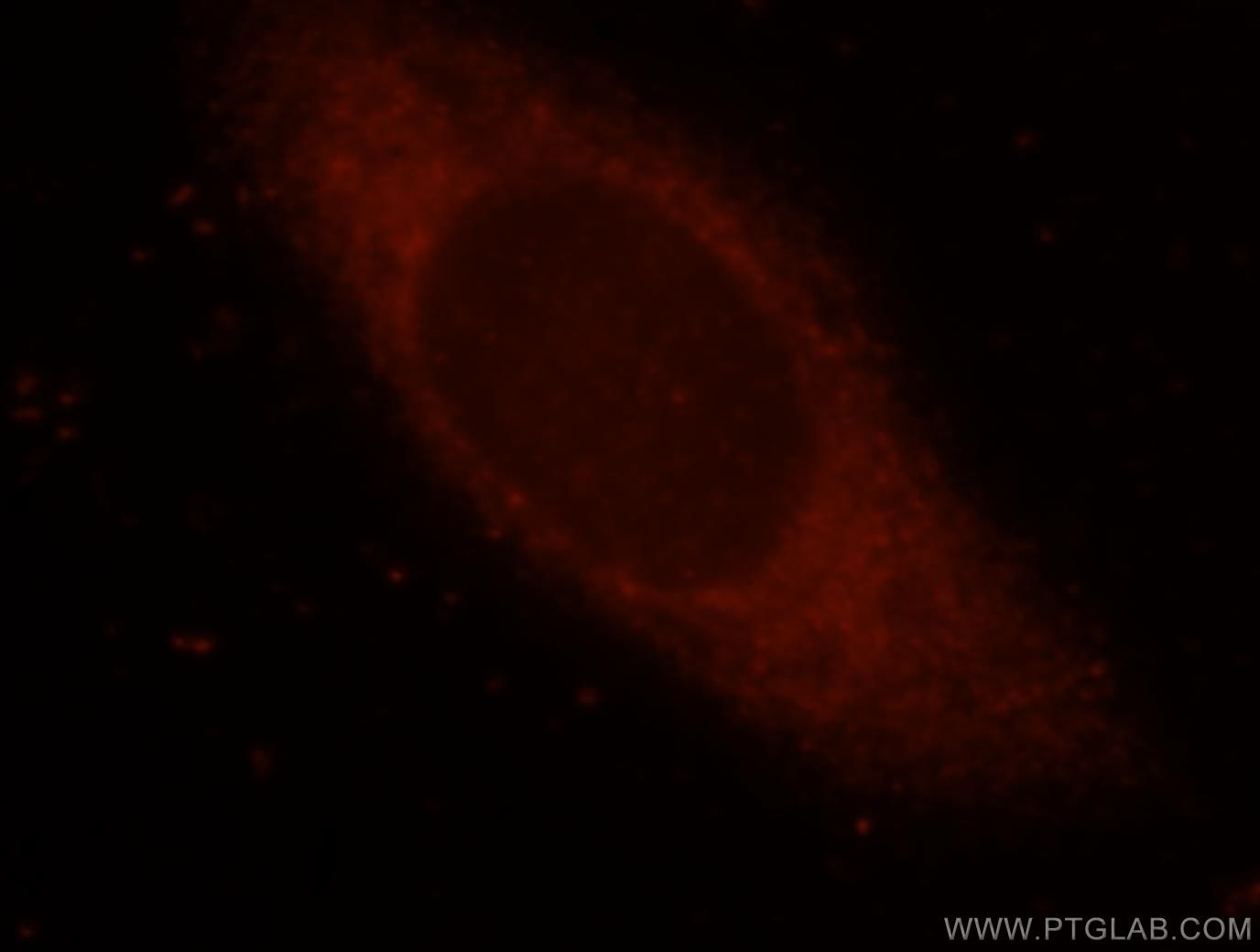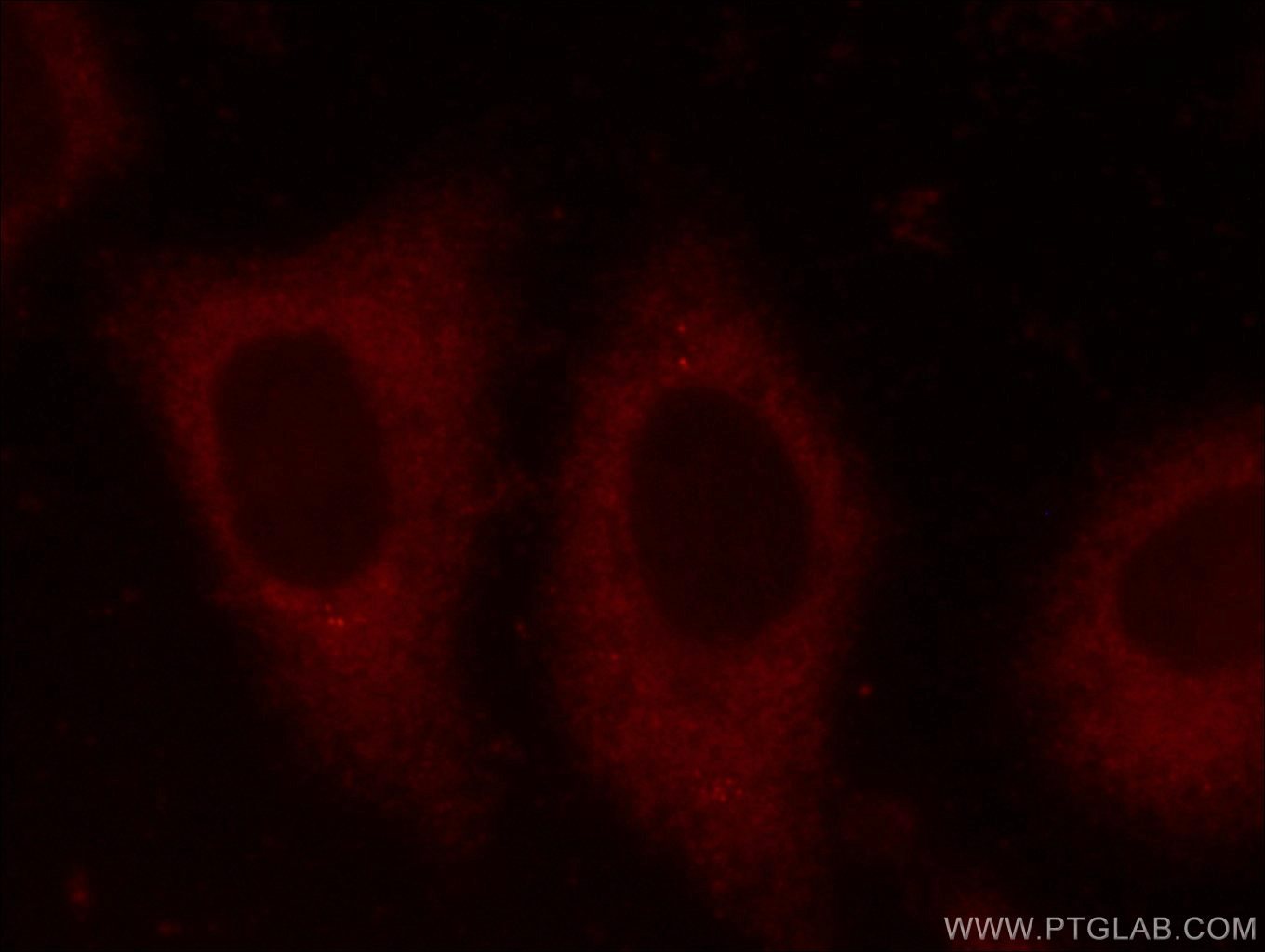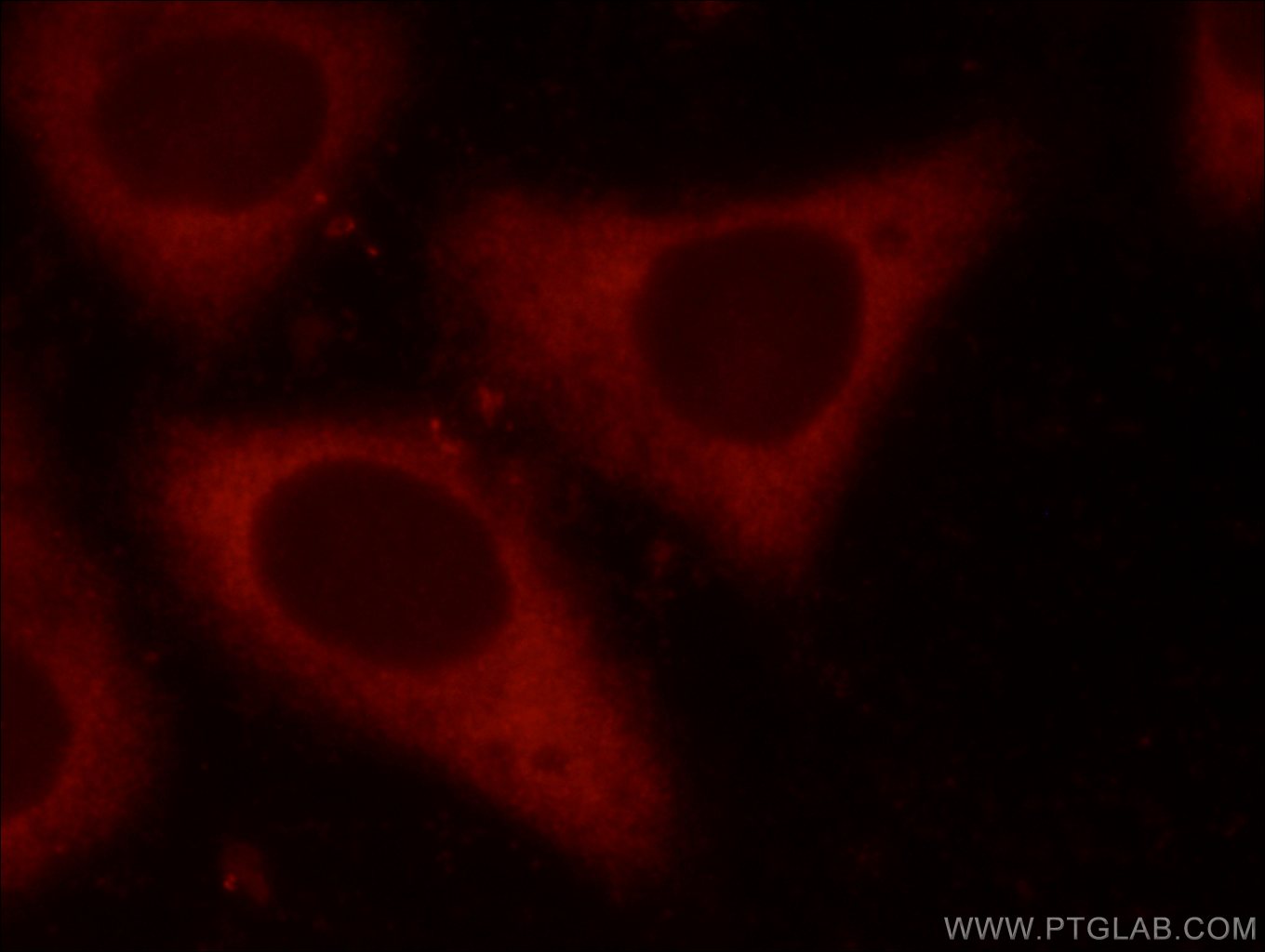- Featured Product
- KD/KO Validated
EIF4G1 Polyklonaler Antikörper
EIF4G1 Polyklonal Antikörper für IF, IHC, IP, WB, ELISA
Wirt / Isotyp
Kaninchen / IgG
Getestete Reaktivität
human und mehr (1)
Anwendung
WB, IP, IHC, IF, CoIP, ELISA
Konjugation
Unkonjugiert
Kat-Nr. : 15704-1-AP
Synonyme
Galerie der Validierungsdaten
Geprüfte Anwendungen
| Erfolgreiche Detektion in WB | BxPC-3-Zellen, HeLa-Zellen |
| Erfolgreiche IP | HeLa-Zellen |
| Erfolgreiche Detektion in IHC | humanes Mammakarzinomgewebe Hinweis: Antigendemaskierung mit TE-Puffer pH 9,0 empfohlen. (*) Wahlweise kann die Antigendemaskierung auch mit Citratpuffer pH 6,0 erfolgen. |
| Erfolgreiche Detektion in IF | HeLa-Zellen, HepG2-Zellen, mit Ethacrynsäure behandelte HepG2-Zellen |
Empfohlene Verdünnung
| Anwendung | Verdünnung |
|---|---|
| Western Blot (WB) | WB : 1:500-1:2000 |
| Immunpräzipitation (IP) | IP : 0.5-4.0 ug for 1.0-3.0 mg of total protein lysate |
| Immunhistochemie (IHC) | IHC : 1:50-1:500 |
| Immunfluoreszenz (IF) | IF : 1:10-1:100 |
| It is recommended that this reagent should be titrated in each testing system to obtain optimal results. | |
| Sample-dependent, check data in validation data gallery | |
Veröffentlichte Anwendungen
| KD/KO | See 1 publications below |
| WB | See 13 publications below |
| IHC | See 4 publications below |
| IF | See 5 publications below |
| CoIP | See 1 publications below |
Produktinformation
15704-1-AP bindet in WB, IP, IHC, IF, CoIP, ELISA EIF4G1 und zeigt Reaktivität mit human
| Getestete Reaktivität | human |
| In Publikationen genannte Reaktivität | human, Maus |
| Wirt / Isotyp | Kaninchen / IgG |
| Klonalität | Polyklonal |
| Typ | Antikörper |
| Immunogen | EIF4G1 fusion protein Ag8342 |
| Vollständiger Name | eukaryotic translation initiation factor 4 gamma, 1 |
| Berechnetes Molekulargewicht | 1600 aa, 176 kDa |
| Beobachtetes Molekulargewicht | 250 kDa |
| GenBank-Zugangsnummer | BC007788 |
| Gene symbol | EIF4G1 |
| Gene ID (NCBI) | 1981 |
| Konjugation | Unkonjugiert |
| Form | Liquid |
| Reinigungsmethode | Antigen-Affinitätsreinigung |
| Lagerungspuffer | PBS mit 0.02% Natriumazid und 50% Glycerin pH 7.3. |
| Lagerungsbedingungen | Bei -20°C lagern. Nach dem Versand ein Jahr lang stabil Aliquotieren ist bei -20oC Lagerung nicht notwendig. 20ul Größen enthalten 0,1% BSA. |
Hintergrundinformationen
Eukaryotic cellular messenger RNAs are posttranscriptionally modified by addition of an m(7)GTP moiety to the 5-prime terminus, referred to as a cap. Recognition of the cap structure and unwinding of mRNA secondary structure during the initiation phase of protein synthesis is catalyzed by initiation factors of the eIF4 group. EIF4G1, a subunit of eIF4 gamma, forms various complexes with the other eIF4 polypeptides [PMID: 7601469]. Mutations in the EIF4G1 gene, encoding a component of the eIF4F translation initiation complex, were recently reported as a possible cause for the autosomal dominant form of Parkinson's disease [PMID:22658323]. The calcualted molecular weight of EIF4G1 is 175 kDa, but modified EIF4G1 is about 220-240 kDa. (PMID: 18426977 )
Protokolle
| Produktspezifische Protokolle | |
|---|---|
| WB protocol for EIF4G1 antibody 15704-1-AP | Protokoll herunterladen |
| IHC protocol for EIF4G1 antibody 15704-1-AP | Protokoll herunterladen |
| IF protocol for EIF4G1 antibody 15704-1-AP | Protokoll herunterladen |
| IP protocol for EIF4G1 antibody 15704-1-AP | Protokoll herunterladen |
| Standard-Protokolle | |
|---|---|
| Klicken Sie hier, um unsere Standardprotokolle anzuzeigen |
Publikationen
| Species | Application | Title |
|---|---|---|
Mol Cell The oncomicropeptide APPLE promotes hematopoietic malignancy by enhancing translation initiation. | ||
J Extracell Vesicles Extracellular vesicles rich in HAX1 promote angiogenesis by modulating ITGB6 translation. | ||
Proc Natl Acad Sci U S A Cellular cap-binding protein, eIF4E, promotes picornavirus genome restructuring and translation. | ||
PLoS Genet SAMHD1 Inhibits LINE-1 Retrotransposition by Promoting Stress Granule Formation. | ||
Diabetes Translational Factor eIF4G1 Regulates Glucose Homeostasis and Pancreatic β-Cell Function.
| ||
J Cell Sci ADAR1 limits stress granule formation through both translation-dependent and translation-independent mechanisms. |
